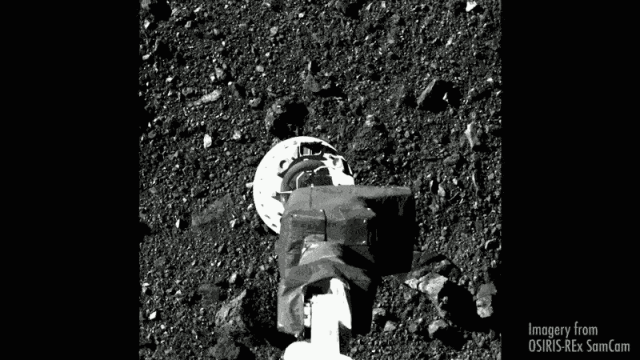The OSIRIS-REx mission was accompanied by success throughout its entire course — the device reached the target asteroid without serious problems, conducted a scientific program, made a regolith fence and returned safely to Earth. But when the capsule with the samples separated from the probe and entered the dense layers of the atmosphere, its first parachute did not open. Despite exceeding the design speed, the second parachute worked normally and the capsule appeared on the surface of the planet in one piece. However, the problem required an investigation, the preliminary results of which are already known — the fault lies in the ill-conceived design and negligence during assembly.
The National Aeronautics and Space Administration of the United States (NASA) in the blog of the OSIRIS-REx mission shared the main hypothesis about why the capsule's braking parachute did not open on time. The problem turned out to be an imperfectly thought-out design of the returned module. It allowed the electrical connections of pyrotechnic devices to be incorrectly connected, which is what happened — Murphy's law is in effect.
As a result, the command to shoot off the protective cover triggered a pyropatron that cut off the parachute slings. At the same time, the parachute itself remained safely under the lid. And when it was time to cut off the slings, the lid's pyropatron worked and released the parachute, and he just flew away with her. The reason for this is the contradictory name of connectors and connections. In the capsule's electronics diagram, the "main" line associated with parachute control was responsible for connecting the main parachute. While among the connectors of the end devices there was a separate "main" (also main) leading to pyrotechnics shooting off the lid and a small braking parachute.
During assembly, the engineers apparently did not follow all the control lines closely enough and connected the "main" cable to the "main" connector. And for some reason, during all the tests of the equipment before the launch of the mission, no one found this error. Fortunately, there were enough mechanisms on the capsule to increase fault tolerance. Therefore, such an incorrect connection did not compromise the landing procedure completely, but only partially disrupted the sequence of commands.
According to the flight cyclogram, the protective cover of the capsule was supposed to detach from the capsule at an altitude of just over 30 kilometers, then a small braking parachute was opened. His task is to correctly orient the return vehicle and reduce its speed to the limits for which the main parachute is designed. Further, at an altitude of about 3.5 kilometers, the small braking parachute had to shoot back so that the main one would open by three kilometers of altitude.
Instead, the capsule entered the atmosphere and slowed down only due to its own aerodynamics up to an altitude of 2,700 meters. Then, apparently, according to the timer, the lid's pyropatron worked — instead of the first parachute's detaching pyropatron. He, in turn, already torn off in advance, flew away with her. When the main parachute went off immediately after that, the capsule was moving much faster and was at a lower altitude than planned. However, there was enough margin of safety and it met the surface in relatively safe conditions for its integrity. However, a few minutes earlier than expected.
 |
| Sampling of the asteroid (101955) Bennu by the OSIRIS-REx apparatus, shooting from the onboard camera at the time of the final approach. |
| Source: NASA's Goddard Space Flight Center, CI Lab, SVS |
NASA experts made all the above conclusions based on the analysis of the capsule's telemetry and a close study of its drawings for possible points of failure. It will be possible to check them only when the work on extracting soil samples is over — this is a priority now. So far, the returned device is in an airtight box and its electronics, including pyrotechnics control wiring, cannot be reached.
It is worth admitting that in the history of cosmonautics there have been much more serious (and stupid) mistakes in the design or assembly of spacecraft. A quarter of a century ago, NASA and Lockheed Martin managed to lose a Mars probe worth half a billion dollars (in 2023 prices) due to inconsistencies in units of measurement. The Agency, as an organization dealing with information in international scientific cooperation, used the metric system of units. And the contractor who manufactured the chassis of the device, as an American company, is familiar to himself — an American one.
As a result, the control software sent commands to the propulsion system in Newtons, and the Mars Climate Orbiter interpreted them as pounds of force. The device missed the thrust by 4.45 times and, instead of entering orbit around Mars, either crashed into it or entered its atmosphere too abruptly, overheated and went into a near-solar orbit with an already non-working piece of metal.

